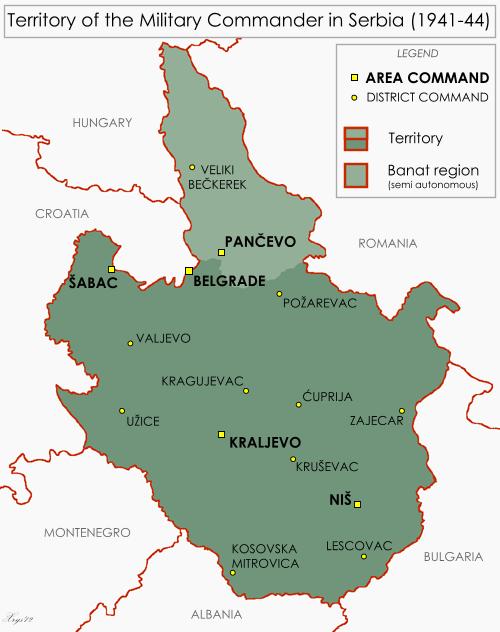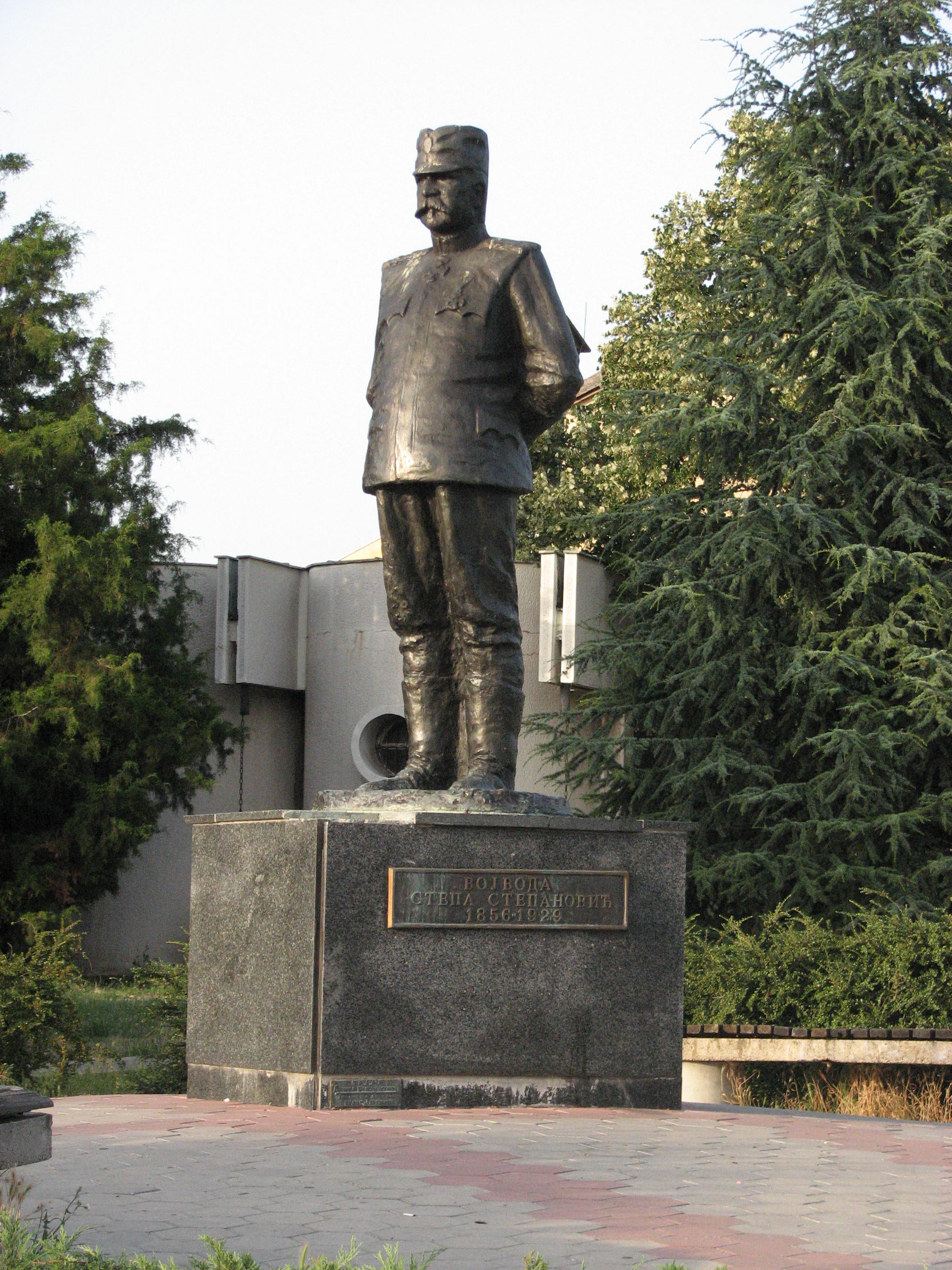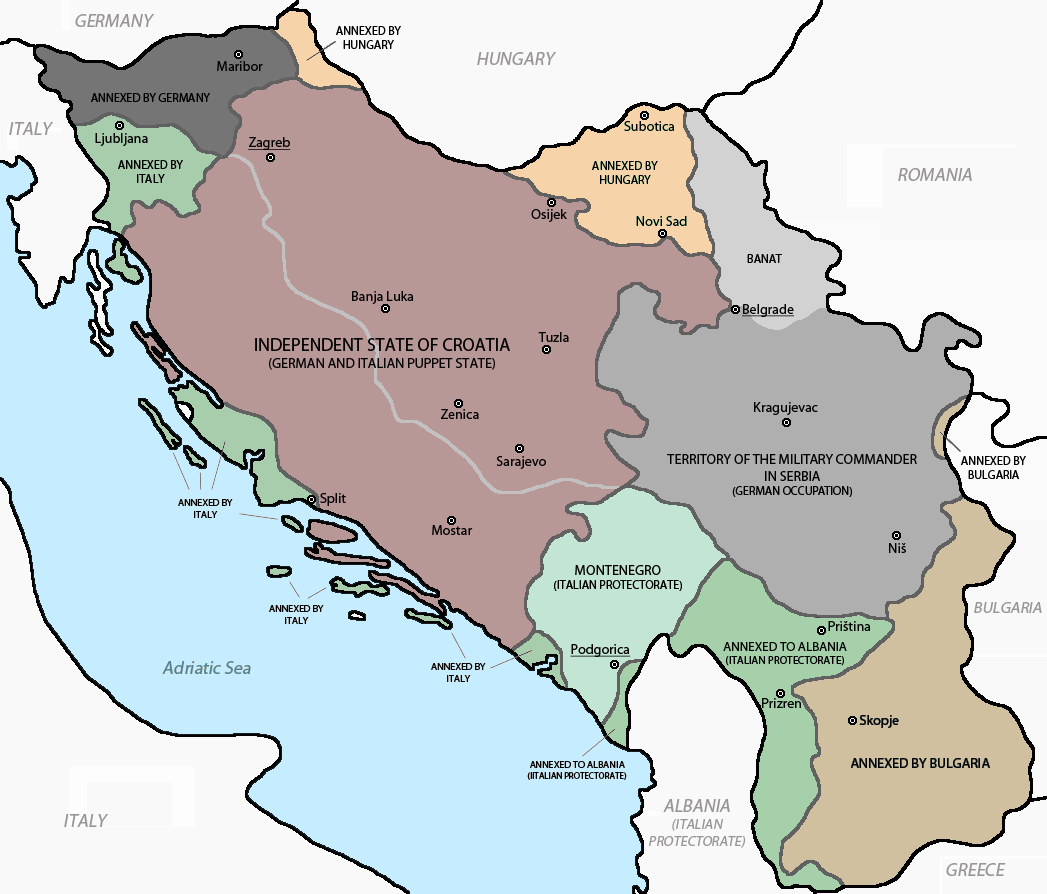|
Jajinci
Jajinci ( sr-cyrl, Јајинци, ) is an List of Belgrade neighborhoods, urban neighborhood located in the municipality of Voždovac, in Belgrade, Serbia. It was the site of the worst carnage in Serbia during World War II when German occupational forces executed nearly 80,000 people, many of them prisoners of the nearby Banjica concentration camp. Jewish women and children from German Sajmište concentration camp, killed in a special gas truck on their way to Belgrade were also buried here. Location Jajinci is located in the Lipnica creek valley. Once a small village far from downtown Belgrade, Jajinci today has grown into one continuous metropolitan area with the rest of the city. It borders the neighborhoods of Banjica on the north, Kumodraž on the east, and Selo Rakovica on the south. The eastern border of the neighborhood is marked by the Jelezovac creek, which also forms a border with the municipality of Rakovica (Belgrade), Rakovica. Characteristics The settlement spre ... [...More Info...] [...Related Items...] OR: [Wikipedia] [Google] [Baidu] |
Banjica Concentration Camp
The Banjica concentration camp (german: KZ Banjica, sr-Cyrl-Latn, Бањички логор, Banjički logor) was a Nazi Germany, Nazi German Nazi concentration camps, concentration camp in the Territory of the Military Commander in Serbia, the Military Administration (Nazi Germany), military administration of the Third Reich established after the Invasion of Yugoslavia, Invasion and occupation of Yugoslavia during World War II. In response to escalating resistance, the German army instituted severe repressive measures – mass executions of civilian hostages and the establishment of concentration camps. Located in the Banjica neighborhood of Dedinjea suburb of Belgradeit was originally used by the Germans as a center for holding hostages. The camp was later used to hold anti-fascist Serbs, Jews, Romani people, Roma, captured Yugoslav Partisans, Partisans, Chetniks and other opponents of Nazi Germany. By 1942, most executions occurred at the firing ranges at Jajinci, Marinkova Bar ... [...More Info...] [...Related Items...] OR: [Wikipedia] [Google] [Baidu] |
Subdivisions Of Belgrade
Serbia's capital city of Belgrade is divided into 17 municipalities. Most of the municipalities are situated on the southern side of the Danube and Sava rivers, in the Šumadija region. Three municipalities (Zemun, Novi Beograd, and Surčin) are on the northern bank of the Sava, in the Syrmia region, and the municipality of Palilula, spanning the Danube, is in both the Šumadija and Banat regions. Municipalities Governmental structure A municipality is a part of the territory of the City of Belgrade, in which certain operations of local self-government laid down by the City Charter are run. Pursuant to the Constitution, legislation, present Charter and bylaws of the municipality, the citizens participate in conducting operations of the municipality through the councilors elected to the municipal assembly, civil initiative, local citizens’ meeting and referendum. The bodies of the municipality are: *Municipal Assembly *Municipal Council The number of councilors in the ... [...More Info...] [...Related Items...] OR: [Wikipedia] [Google] [Baidu] |
Jelezovac
Jelezovac ( sr-Cyr, Јелезовац) is an urban neighborhood of Belgrade, the capital of Serbia. It is located in the municipality of Rakovica. Though official city documents refer to the area as part of the Sunčani Breg-Jelezovac settlement, the neighborhood which developed in the western part of the Jelezovac area is known as Miljakovac III. Jelezovac remains as the name for the brook and its, still partially non-urbanized valley. Location Jelezovac area occupies entire central-east part of the Rakovica municipality, adjoining the Voždovac municipality and its neighborhood of Jajinci (sub-neighborhoods Rasadnik and Mala Utrina). It is bordered by Kanarevo Brdo and southeast extension of Banjica II are on the north and Miljakovac II and Miljakovac Forest on the northwest. Central western section is urbanized as Miljakovac III while on the south it reaches the Kružni Put thoroughfare, and the neighborhoods of Resnik (to the west) and Selo Rakovica (to the east). Va ... [...More Info...] [...Related Items...] OR: [Wikipedia] [Google] [Baidu] |
Kumodraž
Kumodraž ( sr-cyr, Кумодраж, ) is an urban neighborhood of Belgrade, Serbia. It is located in Belgrade's municipality of Voždovac. Location Kumodraž is located in the central-eastern part of the municipality, in the lower section of the Kumodraž field (''Kumodraško polje''), in the valley of the creek of ''Kumodraški potok''. Eastern and southern borders of the neighborhood are marked by a series of hills: Torlak, Golo Brdo, Stražarska Kosa, and the Kumodraž area is a source of many other creeks apart from the one that gave its name to the neighborhood: Rakovički potok (flows through the neighborhoods of Selo Rakovica and Rakovica), ''Lipica'' (Jajinci), ''Zavojnička reka'' (a tributary to the Bolečica river), ''Bubanj potok'' (flows through Bubanj Potok, also a tributary to the Bolečica), ''Kamena voda'', etc. To the north, Kumodraž is bordered by the neighborhood of Voždovac, to the north-west by Veliki Mokri Lug and to the east by Jajinci. Population ... [...More Info...] [...Related Items...] OR: [Wikipedia] [Google] [Baidu] |
Territory Of The Military Commander In Serbia
The Territory of the Military Commander in Serbia (german: Gebiet des Militärbefehlshabers in Serbien; sr, Подручје Војног заповедника у Србији, Područje vojnog zapovednika u Srbiji) was the area of the Kingdom of Yugoslavia that was placed under a military government of occupation by the Wehrmacht following the invasion, occupation and dismantling of Yugoslavia in April 1941. The territory included only central Serbia, with the addition of the northern part of Kosovo (around Kosovska Mitrovica), and the Banat. This territory was the only area of partitioned Yugoslavia in which the German occupants established a military government. This was due to the key rail and the Danube transport routes that passed through it, and its valuable resources, particularly non-ferrous metals. On 22 April 1941, the territory was placed under the supreme authority of the German military commander in Serbia, with the day-to-day administration of the territory u ... [...More Info...] [...Related Items...] OR: [Wikipedia] [Google] [Baidu] |
Selo Rakovica
Selo Rakovica () is an urban neighborhood of Belgrade, the capital of Serbia. It is located in Belgrade's municipality of Voždovac and should not be confused with the neighborhood of Rakovica in the municipality of the same name. Location Selo Rakovica is located in the central part of the municipality, in the valley of the creeks of Rakovički potok and ''Milošev potok'', some 10 kilometers south-east of downtown Belgrade. Once a small village distant from downtown, Selo Rakovica today grew into one continuous built-up area with the rest of the city, bordering the neighborhoods of Jajinci on the north and Pinosava on the south. Characteristics At the time, Selo Rakovica got the official prefix ''selo'' (Serbian for "village") to make a distinction from the much larger, industrial suburb of Rakovica. However, in the 1970s, Selo Rakovica was also annexed to the Belgrade City proper (''uža teritorija grada'') but the style ''Selo'' remained in an unofficial use. It is completel ... [...More Info...] [...Related Items...] OR: [Wikipedia] [Google] [Baidu] |
Banjica
Banjica ( sr, Бањица, ) is an urban neighborhood of Belgrade, the capital of Serbia. It is divided between the Belgrade's municipalities of Savski Venac (western half) and Voždovac (eastern half). Location Banjica is located 5-6 kilometers south of downtown Belgrade (Terazije), on the Banjica hill. On the west, the hill descends into the valley and neighborhood of Lisičji Potok and further continues into the hill and woods of Topčider while on the south it descends into the valley of the creek of ''Kaljavi potok'', bordering the neighborhoods of Kanarevo Brdo (south-west) and Jajinci (south-east). To the north, Banjica extends into the elite neighborhood of Dedinje while the eastern side is covered by the Banjica forest, a long narrow belt of deciduous woodland along the Boulevard of Liberation, which separates Banjica from the neighborhoods of Voždovac and Trošarina. Geography There are two forests in the neighborhood. Banjica Rising (''Banjički vis'', Savski V ... [...More Info...] [...Related Items...] OR: [Wikipedia] [Google] [Baidu] |
List Of Belgrade Neighborhoods
Belgrade, the capital city of Serbia, is divided into seventeen municipalities, of which ten are urban and seven suburban. In this list, each neighbourhood or suburb is categorised by the municipality in which it is situated. Six of these ten urban municipalities are completely within the bounds of Belgrade City Proper, while the remaining four have both urban and suburban parts. The seven suburban municipalities, on the other hand, are completely located within suburban bounds. Municipalities of the City of Belgrade are officially divided into local communities ( Serbian: месна заједница / ''mesna zajednica''). These are arbitrary administrative units which on occasion correspond to the neighbourhoods and suburbs located in a municipality, though usually they don't. Their boundaries often change as the communities merge with each other, split from one another, or change names, so the historical and traditional names of the neighbourhoods survive. In the majorit ... [...More Info...] [...Related Items...] OR: [Wikipedia] [Google] [Baidu] |
List Of Belgrade Neighbourhoods And Suburbs
Belgrade, the capital city of Serbia, is divided into seventeen municipalities, of which ten are urban and seven suburban. In this list, each neighbourhood or suburb is categorised by the municipality in which it is situated. Six of these ten urban municipalities are completely within the bounds of Belgrade City Proper, while the remaining four have both urban and suburban parts. The seven suburban municipalities, on the other hand, are completely located within suburban bounds. Municipalities of the City of Belgrade are officially divided into local communities ( Serbian: месна заједница / ''mesna zajednica''). These are arbitrary administrative units which on occasion correspond to the neighbourhoods and suburbs located in a municipality, though usually they don't. Their boundaries often change as the communities merge with each other, split from one another, or change names, so the historical and traditional names of the neighbourhoods survive. In the majority ... [...More Info...] [...Related Items...] OR: [Wikipedia] [Google] [Baidu] |
Voždovac
Voždovac ( sr-cyr, Вождовац, ) is a municipality of the city of Belgrade. According to the 2011 census results, the municipality has a population of 158,213 inhabitants. The municipality is located in the south-central part of the urban area of Belgrade and in the central section of the wider Belgrade City area. It stretches meridionally (north to south) for almost , spreading to the south more than any other municipality of Belgrade. Due to its shape, it borders more municipalities than any other: Vračar on the north, Zvezdara on the north-east, Grocka on the east, Sopot on the south, Barajevo on the south-west, Čukarica and Rakovica on the west and Savski Venac on the north-west. History The municipality of Voždovac originates from 1904. In 1945 Belgrade was divided into districts (''rejon'') and Voždovac became part of District VI. In 1952 the districts were abolished and the municipalities re-established. Municipality of Pašino Brdo was annexed to Voždovac on ... [...More Info...] [...Related Items...] OR: [Wikipedia] [Google] [Baidu] |
Romani People
The Romani (also spelled Romany or Rromani , ), colloquially known as the Roma, are an Indo-Aryan ethnic group, traditionally nomadic itinerants. They live in Europe and Anatolia, and have diaspora populations located worldwide, with significant concentrations in the Americas. In the English language, the Romani people are widely known by the exonym Gypsies (or Gipsies), which is considered pejorative by many Romani people due to its connotations of illegality and irregularity as well as its historical use as a racial slur. For versions (some of which are cognates) of the word in many other languages (e.g., , , it, zingaro, , and ) this perception is either very small or non-existent. At the first World Romani Congress in 1971, its attendees unanimously voted to reject the use of all exonyms for the Romani people, including ''Gypsy'', due to their aforementioned negative and stereotypical connotations. Linguistic and genetic evidence suggests that the Roma originated ... [...More Info...] [...Related Items...] OR: [Wikipedia] [Google] [Baidu] |
Independent State Of Croatia
The Independent State of Croatia ( sh, Nezavisna Država Hrvatska, NDH; german: Unabhängiger Staat Kroatien; it, Stato indipendente di Croazia) was a World War II-era puppet state of Nazi Germany and Fascist Italy (1922–1943), Fascist Italy. It was established in parts of Axis occupation of Yugoslavia, occupied Yugoslavia on 10 April 1941, after invasion of Yugoslavia, the invasion by the Axis powers. Its territory consisted of most of modern-day Croatia and Bosnia and Herzegovina, as well as some parts of modern-day Serbia and Slovenia, but also excluded many Croats, Croat-populated areas in Dalmatia (until late 1943), Istria, and Međimurje (region), Međimurje regions (which today are part of Croatia). During its entire existence, the NDH was governed as a one-party state by the Fascism, fascist Ustaše, Ustaša organization. The Ustaše was led by the ''Poglavnik'', Ante Pavelić."''Poglavnik''" was a term coined by the Ustaše, and it was originally used as the title ... [...More Info...] [...Related Items...] OR: [Wikipedia] [Google] [Baidu] |

.png)

